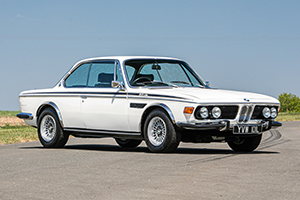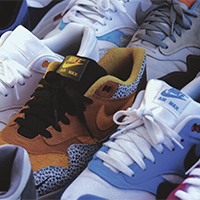 From handbags to sneakers, hot sauce to celebrity hair, the world of collectibles is weird and wonderful. But it’s also highly valuable – with the market set to be worth $522bn by 2028
From handbags to sneakers, hot sauce to celebrity hair, the world of collectibles is weird and wonderful. But it’s also highly valuable – with the market set to be worth $522bn by 2028
In 2010, a one-of-a-kind doll created by Australian fine jewellery designer Stefano Canturi was sold at Christie’s in New York for $302,500 (the money raised was donated to the Breast Cancer Research Foundation). It was the world’s most expensive Barbie.
Meanwhile, a T206 Honus Wagner baseball card sold for a whopping $6.606m in August 2021.
This notion of adults paying a not-so-small fortune for items usually lusted after by children is a curious but very real one.
Harry Rinker, Head of the Institute for Antiques and Collectibles, believes that entering into this world tends to link people back to childhood memories and a desire for “bygone days when life was simpler and happier”.
James Haithwaite, Luxury Car and Asset Specialist at IQ-EQ, agrees. “People often collect cars that they would have aspired to own as children,” he says. “They remember them driving past in the street and thinking: ‘Wow, isn’t that nice’.”
Haithwaite says there are five key aspects people are on the lookout for when it comes to car collection: provenance, rarity, usability, desirability and originality.
“What I mean by usability is that you can take it to the pub, drive it to work or pick up the kids from school in it. It won’t be an everyday car, but you can keep it in your garage at home – which you couldn’t do with a Formula One car. You can’t maintain those yourself; they require a whole team of mechanics.”
Provenance is also essential when it comes to art, says Maria de Peverelli, Partner and Executive Chairman of Stonehage Fleming Art Management.
“The greatest risk is buying a work from someone who doesn’t have the right to sell it – a piece that has been looted or exported illegally, for example,” she says.
“On the other hand, if the previous owner was extremely famous, the item could acquire value. When Princess Margaret sold her jewels, the prices were up to 200 times the value of the items themselves because they had belonged to her. All of this is why it’s vital to know where items have come from.”
 Feeling the passion
Feeling the passion
The art of building a luxury collection is sometimes known as passion investing – and for good reason. “Buy what you love” is advice that comes up time again from the experts, even for those starting out.
“If someone is brand new to collecting cars, they should go with what excites them,” says Haithwaite.
“Once they’ve decided on the direction they want to go in, they need to do a great deal of research. What model do they want? Do they go with an early one or a later one?”
Haithwaite recommends getting cars inspected by an independent specialist or working with an owners club before finally negotiating a price with the seller.
De Peverelli says the first thing people should do when looking to start an art collection is to train their eye and get to know their own tastes.
“Look, look, look – and look some more,” she says. “Try to understand what you find interesting. Then read about it, talk to people, visit galleries, museums and studios. Train your eye and then study.
“And remember, it’s not all about price. If you are passionate and something interests you, you can create an extraordinary collection from nothing.”
When it comes to art, however, de Peverelli doesn’t believe potential buyers should seek the help of advisers at the start. “People should try to work by themselves to begin with,” she explains. “Otherwise where is the fun?
“That said, it depends why you’re purchasing. If you’re doing so for investment purposes, you might do well to work with someone to make sure you don’t end up throwing your money away.”
So, how do potential buyers ensure what they are purchasing is authentic? “When it comes to contemporary works, it’s easy,” says de Peverelli.
“If you’re buying directly from the artist, you shouldn’t have a problem. The same goes for buying from a gallery that represents the artist – although you should request a certificate of authenticity.
“But with the masters, it gets much more complicated. Attribution is often a question of opinion.
"It’s very difficult to find documents that confirm the complete history of a painting from the 14th century to today. In a few cases, you can do this, but in many you cannot. You also have to understand if it’s a work by the master or the studio of the master.”
Car smart
Automobiles are a slightly different story. “What’s beneficial about cars,” says Haithwaite, “is that there’s an awful lot you can find out on the internet. If I’m given a chassis number or even a registration number, I could discover that, for example, a car was sold at an auction 10 years ago and then also sold at an auction nine and half years ago.
“Why would that have been? It could be because someone has discovered they have bought something that wasn’t what they had been promised, so they’ve decided to get rid of it quickly.”
As for Haithwaite’s view on auctions in general, he says: “There are two reasons a car would be in an auction: it’s impossible to value, such as the best example of a particular make and model, meaning there will be a frenzy of buyers for it; or the car is only going to be driven for 10 miles before going ‘bang’.
“With dealers,” he continues, “you’ll pay more than you would from a private seller, but you might get offered a warranty, and you’ll have more return ability. So, if you find out it’s stolen, you can just hand it back. And that does happen occasionally.”
“When you’re buying cars, you’re literally dealing with a secondhand car salesperson,” Haithwaite continues.
“A lot of it comes down to how you feel about the individual selling – do you get on with them? Do you think they are trustworthy?
“The best person to buy a car from is someone who’s a real ‘anorak’. In those instances, the car you’re looking at means everything to them and there’s a good chance they will be selling for good reason.
“It can also be extremely beneficial to have someone to act as a professional sounding board.
“I’ve got a client with 150 cars in his collection, and he messaged me this morning to say he’s seen a $6.5m Ferrari and wanted to know which of his existing cars he should sell so he can buy it.”
Haithwaite adds: “Collecting cars tends to be passion-led. But if people can make some money at the same time, then that’s a win-win. That means collectors need to keep an eye on what they think is going to be the next big thing and where the market is going as a whole.
“Pre-war cars are starting to slow down a bit in popularity now, because the people who saw those go past when they were children are no longer with us.
“But cars of the 1980s and 90s – like Ferrari F40s, 1,300 of which were built between 1992 and 1997 – are very much en vogue.”
Changing trends
The same applies to art. “In the 1980s, all the big collectors of Impressionists and post-Impressionists were buying French 18th century furniture,” says de Peverelli. “It was considered the best of the best, the chicest thing you could buy. But now, the value of it has dropped dramatically.
“The same happens with artists – they can all of a sudden become a lot less fashionable than they were, say, 10 or 15 years ago.”
“Something that we’re currently finding,” adds Haithwaite, “is that more and more collectors are taking their time to purchase a car. They won’t just go and buy the first Ferrari F40 they come across, they want the one that Michael Schumacher or another celebrity owned, because that’s going to be more collectible further down the line.”
Whether you’re looking to build a collection of classic cars, old masters or even the toys you hankered after in your youth, the advice seems to be the same – follow your heart, trust your gut and keep an eye on the future.
 Where to invest
Where to invest
Wine
The value of fine wine increased by 13% during 2020, and 127% over a decade. In July last year, a rare bottle of 1951 Penfolds Grange sold at auction for a record-breaking $122,001 – making it the most expensive bottle of Australian wine to sell under the hammer.
Whisky
Although it suffered a slight dip in 2020, rare whisky has seen a 478% growth in value over the past decade. Christie’s sold a bottle for £1.2m, a record for a single spirit.
 Handbags
Handbags
In 2020, handbags knocked whisky off the number-one spot of luxury collectible investment items, with prices increasing by 17%. This was said to be the result of an increased appetite for affordable luxury pick-me-ups during the pandemic. Hermes bags are often said to be better investments than stocks and gold, with the Birkin dominating the high end of the market.
Trainers
The past five years has seen an explosion in the rare shoes market, which is said to already be worth $10bn and is predicted to climb to nearly $30bn by 2030. A pair that Kanye West wore to the Grammys in 2008 fetched an incredible $1.8m in
April last year.